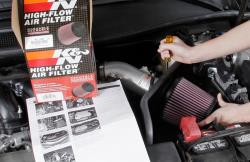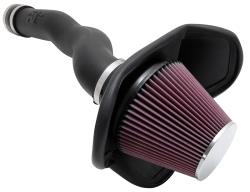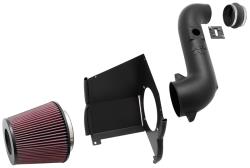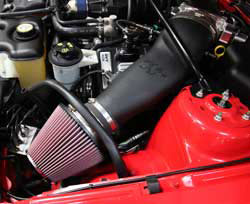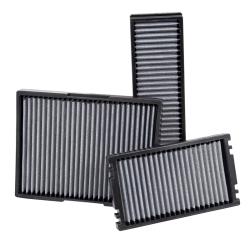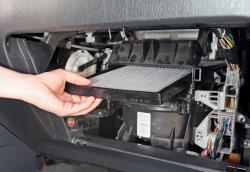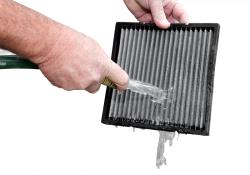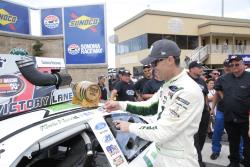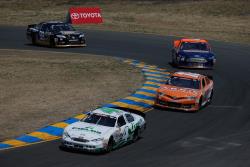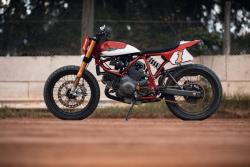
Fuller Moto's Street Tracker has the stance and performance of a full flat tracker (Photo Nick Rico) | It didn’t take long for Bryan Fuller to get fired up about the opportunity to work on a true competition flat track race bike. The master builder, designer, author, TV personality, and friend of K&N is always up for a new challenge.“Instantly this project got me excited,” Fuller said. “This was going to be our first real race chassis! A lot of the same techniques and skills used for our small production runs of frames that we have created over the years came into play. We were getting our chance to break into racing and it was up to us now to build it to the level that these bikes could withstand 130 mph around a track and go for the win.” The project got its start when David Lloyd, crew chief and co-owner of Lloyd Brothers Motorsports, came to Fuller with the idea of teaming up on the build. Lloyd knew what design elements and tweaks he wanted in the bike and he knew that Fuller Moto had the design and fabrication experience to bring the race bike to fruition. The racing knowledge-base that Lloyd possessed and the bike building expertise of Fuller came together in a kind of high-octane perfect storm. 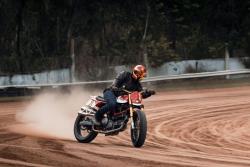
World Champion Racer Johnny Lewis walked away from the Street Tracker impressed (Photo Nick Rico) | “Working alongside Lloyd Brothers, we knew what wasn’t working,” Fuller said. “We also had a strong idea of the bike characteristics that if manipulated, could be a game changer for the team. In addition, Fuller Moto brought some new idea improvements to the equation, like building the breather into the frame, which is an old custom technique.”After the two companies had their meeting of the minds, the initial groundwork stage took some time. “The full development process took about six weeks,” said Fuller. “The beginning set-up took the longest because we made a new JIG filtering system and new neck fixture.” Fuller knew that Lloyd Brothers Motorsports would be ordering multiple frames, so the fabrication setup would have to be up to the task of duplicating the process in a streamlined and very accurate way. That fact proved inspirational for Fuller. 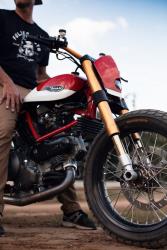
That's a K&N filter providing performance and protection for the Street Tracker (Photo Nick Rico) | “The idea occurred to me,” said Fuller, “why not also create a Limited Edition Pro Street Tracker Series at the same time?” Fuller’s revelation brought another exciting facet to his already intriguing project. When the competition frames were complete and proving to be very successful for Lloyd Brothers in the American Flat Track (AFT) series, Fuller turned his full attention to the Street Tracker. “As Lloyd Brothers Racing Team began winning more places in the AFT Series with their updated bikes, we got to work building the first Limited Edition Series Pro Street Tracker,” said Fuller. The mission was clear. “It was very important to me that this bike perform beautifully both on the track and on the street,” Fuller said. Fuller decided to make subtle but important tweaks to the race frame geometry in its metamorphosis to a street-worthy machine. The real-world ergonomics of the Street Tracker were enhanced with a +3-degree rake, a 1-inch stretch, and swing-arm modifications to slightly lengthen the wheelbase. The ergonomic modifications did not hamper the cutting edge handling of the Street Tracker; they simply made the bike more suitable for street duty. Not only did Fuller want the bike to perform like the race version, he also wanted to retain the race-inspired look. He incorporated the same fiberglass as used on the race bike bodywork, but he trimmed it down a bit for a more tailored appearance. 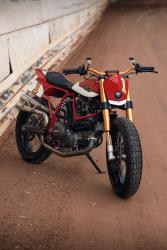
Think of the Street Tracker as a competition bike with lights (Photo Nick Rico) | “Aesthetically I wanted to keep it classic Ducati, emulating the beautiful Italian Ducati paint schemes of the past and future,” said Fuller. To test how well the Street Tracker would perform in the dirt, Fuller turned to World Champion Racer Johnny Lewis. Lewis has raced for Lloyd Brothers in the past and now runs a flat track training school. “Riding the Ducati Street Tracker, which matched the geometry of the Lloyd Brothers Motorsports Ducati I have raced in the past, was unique being that it felt like I was literally on my race bike with head light and electric start,” reported Lewis. “I didn’t expect to be backing a street bike into a corner on a 1/4 mile oval dirt track by the second lap. The fit and feel of the bike is spot on for a street performance motorcycle, providing a handling experience capable of taking off the head lights and going racing at a top level.” Clearly Fuller’s Street Tracker is as close to a competition flat track racer as you will find in a street legal platform. “It is about the only street tracker you can buy that has direct lineage from a race bike,” said Fuller. “It is the real deal.” Of course, Fuller’s first-of-the-series #1 Street Tracker breathes clean and easy trough a K&N pod air filter. For all of your filtration needs check out K&N’s easy-to-navigate online search tool. | 
